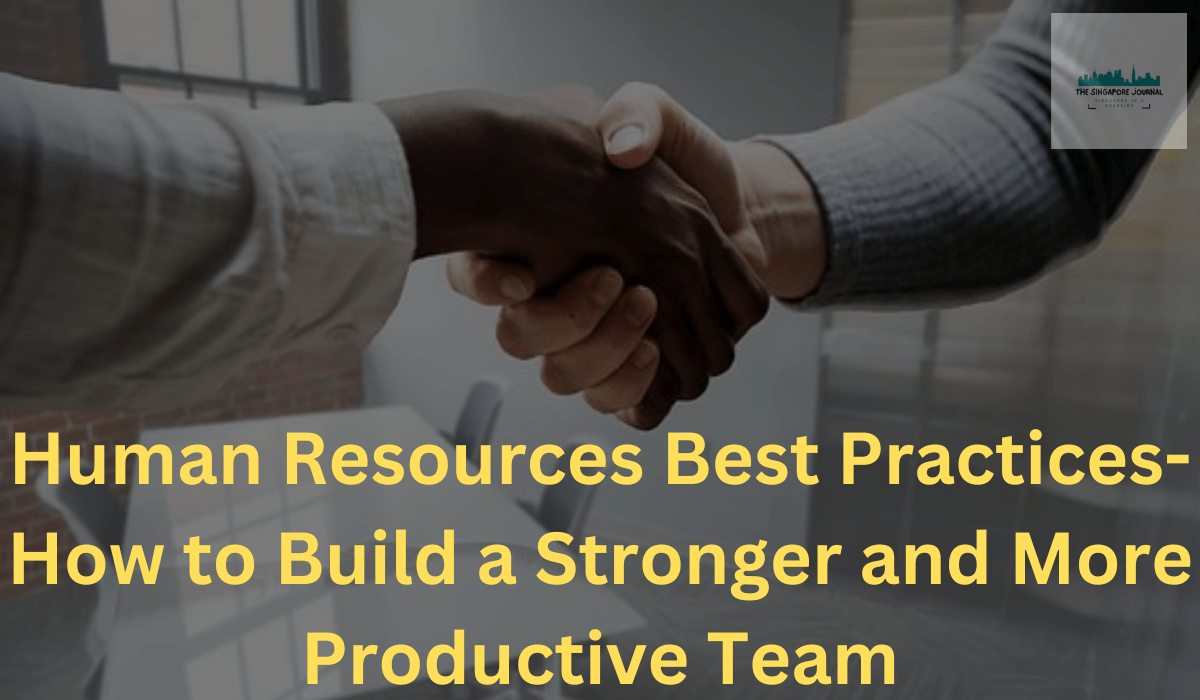Human Resources have been under close examination for many years and continue to be a hot debate topic in business circles. Human resources (HR) is a crucial department in any organisation as it hires, develops, and manages the workforce. Human Resource best practices help businesses build more robust and productive teams by creating a culture of respect, fairness, and engagement.
It is essential to align Human Resource goals with the organisation’s overall goals so that Human Resources, business, and strategy departments are all on the same page. When you can align these ideas and achieve best practices and best fit, you are practising strategic Human resource management. This blog will discuss some of the best practices that Human Resources can adopt to achieve this goal.
First, let us know what Human Resources is
Human Resources is a business or organisation department responsible for managing its employees. HR is liable for hiring, firing, and managing employee benefits, payroll and other staffing needs.
Best Practices of Human Resources

1 Hiring the Right Talent
The first step in building a solid and productive team is hiring the right talent. Human Resource professionals must identify the skills and experience required for each position and create job descriptions that reflect these requirements. They should also complete a recruitment process that is fair, unbiased, and consistent.
2. Onboarding and Training
Once the right talent is hired, Human Resources (HR) must ensure they are onboarded effectively. Effective onboarding is critical as it sets the tone for the employee’s experience in the company. Human Resources should have a comprehensive onboarding program that includes an introduction to the company’s culture, values, and policies. New employees should also be introduced to their team members, managers, and colleagues.
3. Performance Management
Performance management is crucial to Human Resource HR, ensuring employees meet their performance expectations. Human Resource HR should have a performance management system based on clear goals and objectives. The system should also be transparent, consistent, and fair. Employees should receive regular feedback on their performance and opportunities to improve.
Human Resources should also conduct performance reviews regularly, usually annually or bi-annually.
4. Employee Engagement
Employee engagement is critical to building a solid and productive team. Engaged workers are more effective, innovative, and committed to their work. Human resources can promote employee engagement by creating a culture of respect, trust, and transparency. They can also organise team-building activities and social events that help employees connect.
Human Resource can also conduct employee surveys to understand their engagement levels and identify areas for improvement.
5. Diversity and Inclusion
Diversity and inclusion are essential elements of a solid and productive team. Human Resources should ensure their hiring practices are unbiased and inclusive and attract and retain a diverse workforce. They can also provide training and development programs promoting workplace diversity and inclusion.
6. Work-life Balance
Work-life balance is critical to employee well-being and productivity. Human resources should promote work-life balance by offering flexible work adaptations like telecommuting, flexible schedules, and job sharing. They can also provide wellness programs that promote physical and mental well-being, such as gym memberships and mental health resources.
Human Resources (HR) can also encourage managers to lead by example and promote work-life balance by taking time off and not working excessively.
7.Communication
Effective communication is essential to building a solid and productive team. Human Resource(HR) should ensure that communication channels are open and transparent and that employees can access the information they need to do their jobs effectively. They can also provide training and development programs that promote practical communication skills.
HR should also encourage regular employee feedback and ensure it is acted upon.
8. Recognition and Rewards
Employees who feel appreciated and recognised are likely to be engaged and motivated. Human Resources (HR) should establish recognition and reward programs that celebrate employee achievements and contributions. These programs can include bonuses, awards, and public recognition.
Human Resource HR should also ensure that the reward programs are transparent and fair and based on objective and measurable criteria.
9. Compliance
Compliance with employment laws and regulations is critical to building a solid and productive team. Human Resource HR should ensure their policies and practices comply with all relevant laws and regulations. They can also provide training and development programs that educate employees on their rights and responsibilities in the workplace.
10. Continuous Improvement
Human Resources should be committed to continuous improvement. They should regularly review their policies and practices to ensure they are practical and relevant. They can also conduct employee surveys and focus groups to understand employee concerns and identify areas for improvement.
Human Resources should also stay current with emerging human resources trends and best practices and adopt those relevant to the organisation. This approach demonstrates that the organisation is committed to improving the employee experience and promoting a culture of continuous improvement.
Conclusion
Building a solid and productive team requires Human Resource HR to adopt best practices that promote a culture of respect, fairness, and engagement. By adopting these best practices, human resources can generate a workplace that attracts and retains top talent, promotes employee engagement and well-being, and ultimately contributes to the organisation’s success.
It requires a strategic and holistic approach. Human resource HR should work closely with other departments and managers to ensure their practices align with the organisation’s overall goals and strategies.
Also Read:

